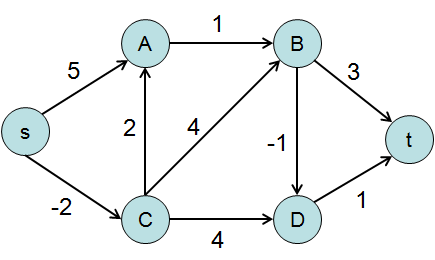
Algorithm design
Reading notes from “The Algorithm Design manual” book written by Steven S. Skiena.
Definitions
Proper mathematical proof:
- Clear & precise statement of what you are trying to prove
- Set of assumptions which are taken to be true
- Chain of reasonning takes you from the assumptions to the statement you are trying to prove
- QED
Algorithmic notations:
- English
- Pseudo code
- Real programming language
Heart of an algorithm is an idea. This idea must be clearly revealed when the algorithm is expressed.
Problem specification:
- Set of allowed input instances
- Required properties of the algorithm’s output
Counter-examples to demonstrate incorrectness
Develop counter-examples hunting skill:
- Think small
- Think exhaustively
- Hunt for the weakness
- Go for a tie
- Seek extremes
Correctness: induction & recursion
- Induction:
- Prove a formula, for example \(\sum_{i=1}^n = \frac{ n(n+1) }{2}\) work for basis cases (like 1 or 2)
- Assume it was true up to \(n-1\)
- Prove is was true to general \(n\) using the assumption
- Recursion is induction
- General & boundary conditions, with the general condition breaking the problem into smaller and smaller pieces
Have to be suspicious about induction.
- Boundary errors
- Wrong extension claims (for example, adding an item that completely changes the solution of a problem)
e.g. Prove that \(\sum_{i=1}^n i \times i! = (n+1)!-1\) by induction
-
\(n=1\) \begin{align*} \sum_{i=1}^n i \times i! &= 1 \times 1 \
&= 1 \end{align*}
\begin{align*} (n+1)!-1 &= 2! - 1 \
&= 1 \end{align*} -
Assume the statement is true up to \(n\). Prove that it is also true for \(n+1\) \begin{align*} \sum_{i=1}^{n+1} i \times i! &= (n+1) \times (n+1)! + \sum_{i=1}^n i \times i! \
&= (n+1) \times (n+1)! + (n+1)!-1 \
&= (n+1)! \times ( (n+1) + 1 ) -1 \
&= (n+1)! \times ( n+2 ) -1 \
&= (n+2)! -1 \
&\blacksquare \end{align*}
Modeling the problem
Try to describe the problem abstractly, in terms of procedures on fundamental structures (e.g. permutatons, graphs, sets …)
Combinatorial objects
Permutations
Arrangements, ordering of items. \(\left\{1,4,3,2\right\}\) and \(\left\{4,3,2,1\right\}\) are two distinct permutations of the same set of four integers. Likely to be used when talking about “arrangement”, “tour”, “ordering” or “sequence”.
Subsets
Selection from a set of items. \(\left\{1,4,3\right\}\) and \(\left\{2\right\}\) are two subsets of the first four integers. Order does not matter in subsets, so the subsets \(\left\{1,4,3\right\}\) and \(\left\{4,3,1\right\}\) would be considered identical. Likely to be used when talking about “cluster”, “collection”, “committee”, “group”, “packaging” or “selection”.
Trees
Represent hierarchical relationships between items.

Likely to be used when talking about “hierarchy”, “dominance”, “relationship”, “ancestor/descendant relationship” or “taxonomy”.
Graphs
Represent relationships between arbitrary pair of objects.

Points are called vertices and links edges.
Likely to be used when talking about “network”, “circuit”, “web”, or “relationship”.
Points
Represent location in some geometric space. Likely to be used when talking about “sites”, “positions”, “data records”, or “locations”.
Polygons / polyhedron
Represent regions in some geometric space. Likely to be used when talking about “shapes”, “regions”, “configurations”, or “boundaries”.
Strings
Represent sequences of characters or patterns. Likely to be used when talking about “text”, “characters”, “patterns”, or “labels”.
Modeling your application in terms of well-defined structures and algorithms is the most important single step toward a solution. Be aware that the act of modeling reduces your application to one of a small number of existing problems and structures.
Recursive objects
Big things made from smaller things of exactly the same type as the big thing.
Combinatorial objects are also recursive.
Recursive descriptions of objects require both decomposition rules and basis cases.
